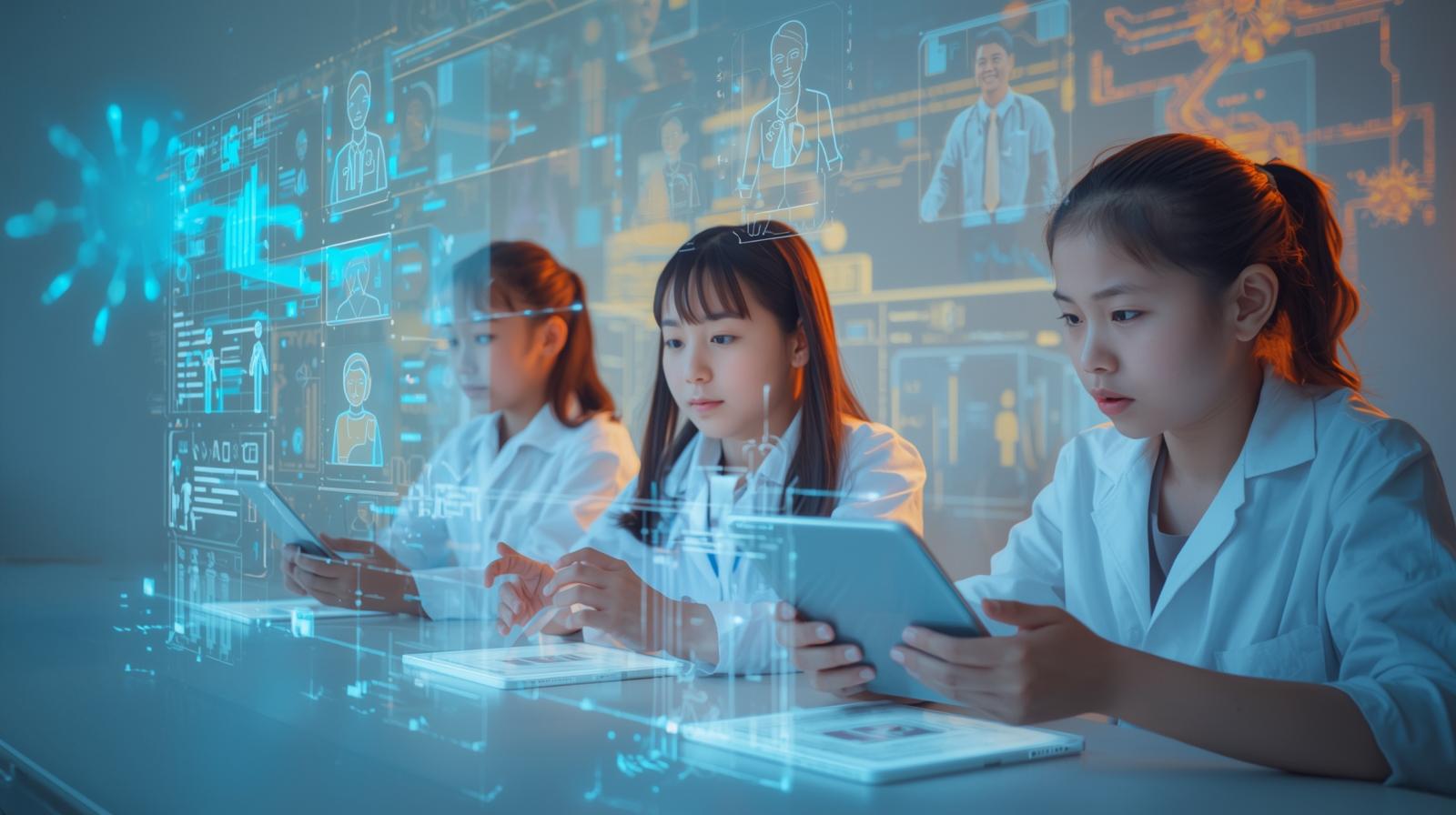The world our children will grow up in is dramatically different from the one we knew. Artificial Intelligence (AI) is no longer a futuristic concept — it’s shaping how we learn, work, and think right now.
By the time today’s middle schoolers reach college, AI will be embedded in every profession — from art and medicine to engineering and entrepreneurship. That’s why it’s essential that children start learning about and using AI early — not as a “tech subject,” but as a thinking tool.
Here are the top 7 reasons why middle school students should use AI and prepare for the changing world.
🧠 1️⃣ AI Builds Critical Thinking — Not Blind Following
Children often use the internet to find answers.
AI flips that — it makes them ask better questions.
By interacting with AI tools like ChatGPT, Copilot, or AI-based learning assistants, students learn to:
- Analyze how machines respond.
- Question bias and accuracy.
- Evaluate multiple viewpoints before forming conclusions.
💡 AI doesn’t replace thinking — it improves it.
💬 2️⃣ AI Improves Communication and Writing Skills
AI tools can help children express their ideas more clearly and creatively.
From brainstorming essays to editing grammar, AI acts as a real-time mentor.
Benefits include:
- Expanded vocabulary and sentence variety.
- Understanding tone and structure.
- Learning how to turn raw ideas into compelling stories.
💡 Teachers now use AI as a writing co-pilot — not a cheat tool. Students who use it ethically learn faster.
⚙️ 3️⃣ AI Teaches Problem Solving Through Experimentation
AI helps children learn by doing, not just memorizing.
With no-code platforms like Scratch with AI, Teachable Machine, or simple ML playgrounds, students can:
- Train models to recognize images or sounds.
- Build simple chatbots.
- See how algorithms “learn” from data.
💡 This teaches systems thinking — how cause and effect work in real-life problem solving.
💡 4️⃣ AI Sparks Creativity and Innovation
AI isn’t only for coding — it’s also for art, music, storytelling, and invention.
Children can:
- Use AI image tools to visualize their ideas.
- Compose music or make digital art with AI.
- Create science projects, presentations, or even YouTube videos powered by AI tools.
💡 AI gives creative children a canvas as big as their imagination.
🌍 5️⃣ AI Builds Global Awareness and Collaboration Skills
The AI era is global and connected.
Students can now collaborate across borders using shared AI tools, learning how other children think and solve problems.
They learn:
- Digital citizenship and ethics.
- Respect for diversity and cultural perspectives.
- The importance of collaboration in solving global challenges (climate, health, inequality).
💡 Tomorrow’s leaders won’t work alone — they’ll work with both people and intelligent systems.
💼 6️⃣ AI Prepares Students for Future Careers
According to the World Economic Forum, 65% of students entering school today will work in jobs that don’t yet exist — most of them powered by AI.
AI will influence careers in:
- Healthcare (diagnostic AI)
- Finance (credit risk and analytics)
- Education (personalized tutoring)
- Design (AI-aided creativity)
- Law (contract analysis tools)
By starting early, middle schoolers can build confidence and curiosity for tomorrow’s opportunities.
💡 The best career skill for the next decade is AI literacy.
❤️ 7️⃣ AI Encourages Empathy and Human Values
Surprisingly, learning AI helps children understand what makes us human.
When students see how machines think — logically, but without empathy — they start to value:
- Human creativity and emotions.
- The importance of ethics, fairness, and kindness.
- Responsible decision-making.
💡 AI can teach humanity — if we teach children to use it responsibly.
🌟 Final Thoughts: Raise AI-Smart, Human-Strong Kids
The goal isn’t to make every child a coder.
It’s to help them understand and harness AI as a tool for creativity, learning, and kindness.
At Omovera / CogniSphere, we believe AI literacy is the new literacy.
When children learn AI early, they don’t just prepare for the future — they help create it.
📚 Bonus: How to Get Started
- Try fun tools like Google Teachable Machine or Quick, Draw!
- Explore ChatGPT for Kids or Bing Copilot for creative projects.
- Join AI learning clubs or school workshops.
Encourage “create with AI” projects instead of passive app use.

